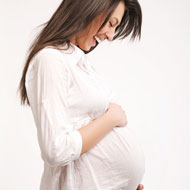What Causes Ectopic Pregnancy (Abortion)
An ectopic pregnancy happens when the fertilized ovum isn’t implanted in the uterine wall but in other tissue. Generally ectopic pregnancies happen in the Fallopian tube and are known as tubal pregnancies. However, the ovum can implant itself in the abdomen, ovaries, and cervix.
In this sort of pregnancy, the embryo never reaches the uterus and often sticks to the lining of the Fallopian tube. This can cause bleeding and this might expel the embryo and causes ectopic pregnancy abortion.
At this time, Prostaglandins are released and there is blood in the peritoneal cavity, which causes pain.
There is something called methotrexate treatment that is helpful in treating ectopic pregnancy and abortion. But surgery is necessary when the Fallopian tube ruptures or is about to rupture. Surgery can be laparoscopic.
Causes of Ectopic Pregnancy
There are speculative causes. Some of these are:
- Tube occlusion and cilial damage. If there is a blockage of the Fallopian tubes or the cilia is damaged, then it can cause an ectopic pregnancy. If a woman has pelvic inflammatory disease or PID, then she is at a greater risk of having an ectopic pregnancy.
- Too much of progesterone and estrogen can also lead to an ectopic pregnancy. However, this point hasn’t been proven.
- Some experts also believe that there might be a connection between infertility treatments and ectopic pregnancy.
- It is believed that older women who are trying to conceive might be at the risk of having an ectopic pregnancy.
Symptoms of an Ectopic Pregnancy
Early on in the ectopic pregnancy, either there isn’t any symptom or the signs are subtle. Some of the early signs to look out for are:
- Discomfort and mild pain.
- Mild vaginal bleeding.
- Pain and vaginal bleeding during late ectopic pregnancy.
If the bleeding is severe, it may be accompanied by pain in the pelvic region, abdomen or lower back. Shoulder pain is also not unusual. The patient might have cramps on one side of the pelvis.
The symptoms of ectopic pregnancy can be confused with other health issues like urinary system problems, gastrointestinal disorders, appendicitis and even pelvic inflammatory disease.
Diagnosis for an Ectopic Pregnancy
A physician might suspect an ectopic pregnancy if a patient, who has a positive result in the pregnancy test, complains of lower abdominal pain or/and unusual bleeding. If the blood hCG levels rises abnormally, then this can mean that the person has an ectopic pregnancy. The physician will do an ultrasound and bloodwork, and can repeat these tests to confirm the results. Presence of a gestational sac and a fetal heart beat can confirm an ectopic pregnancy.


